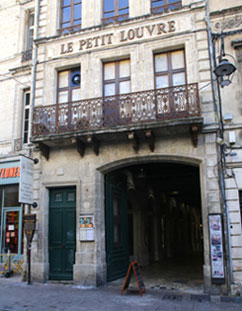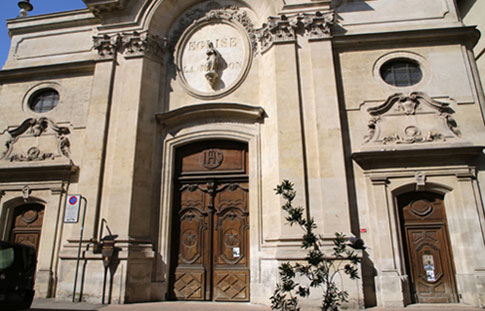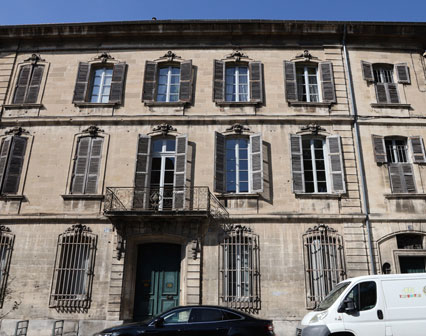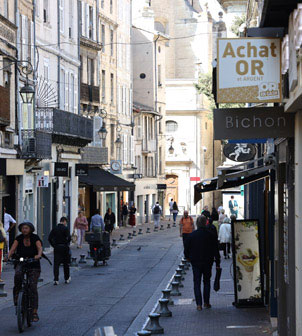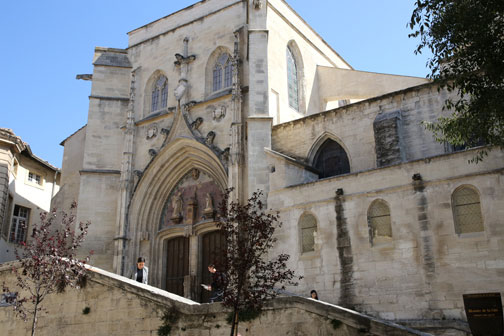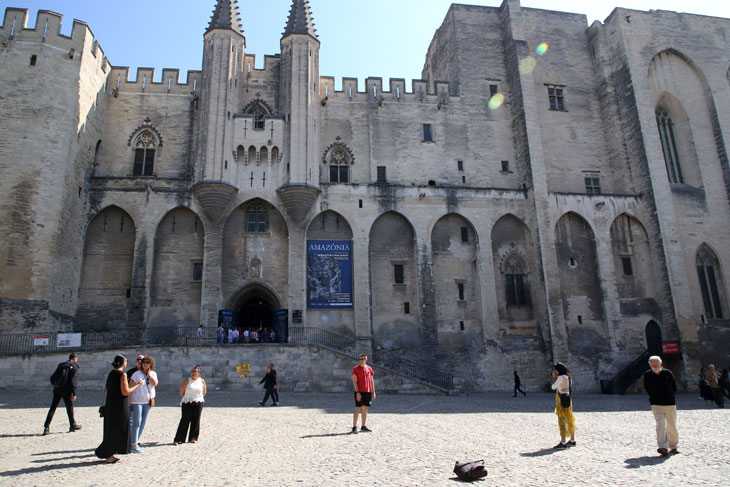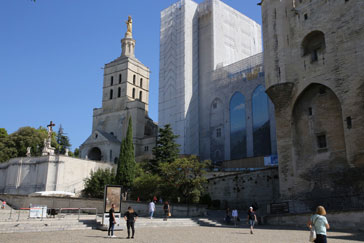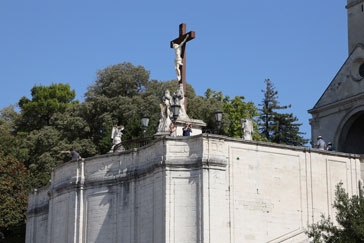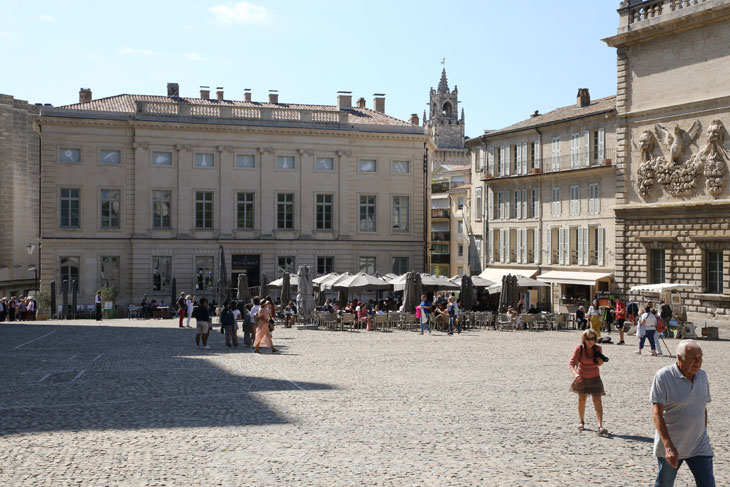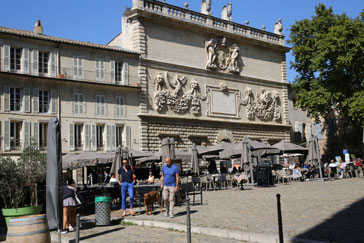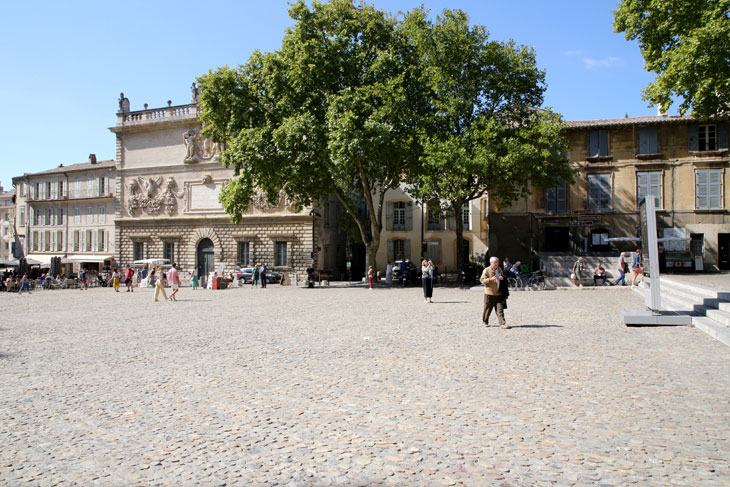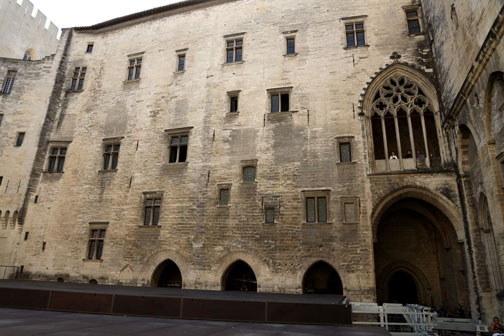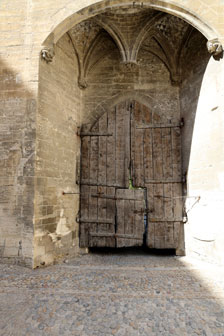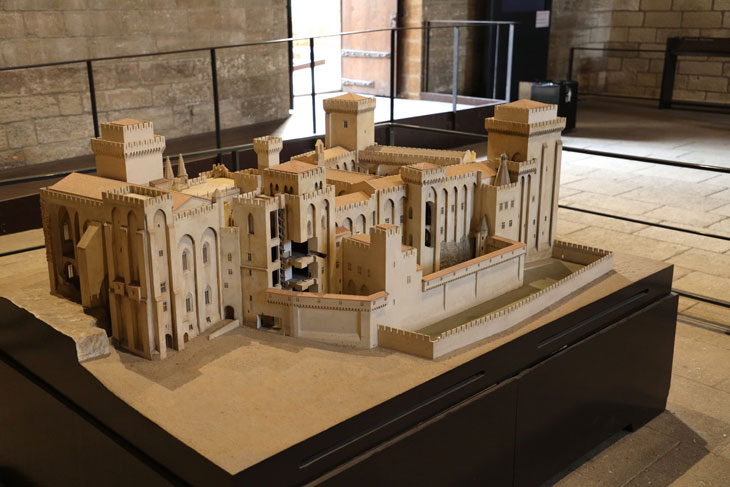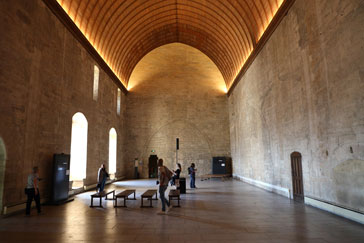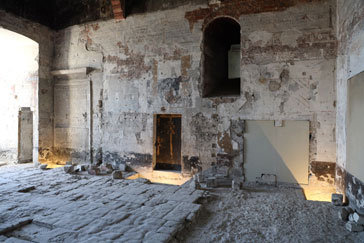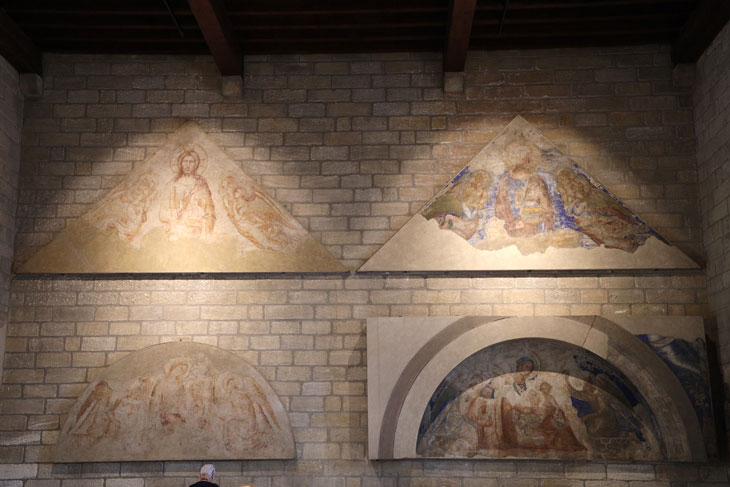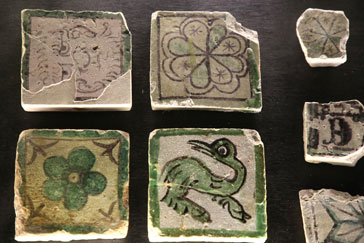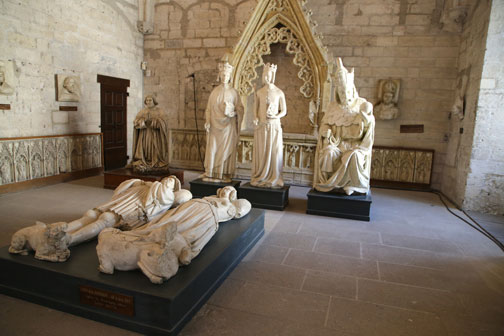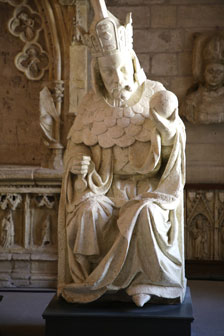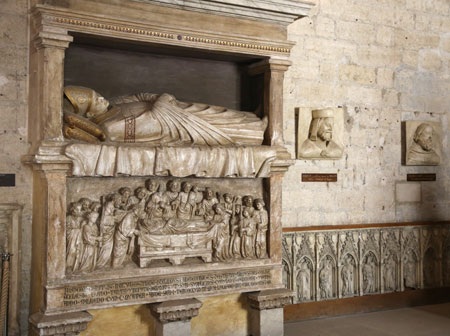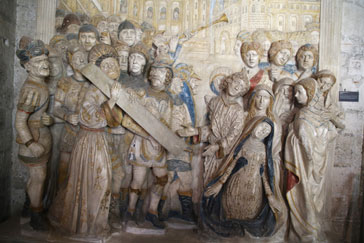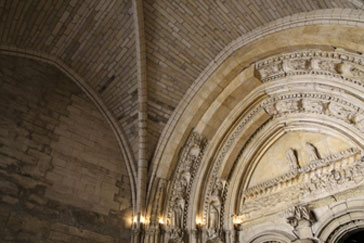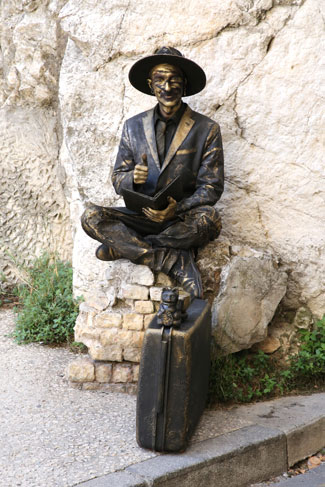Avignon
Our next excursion was to Avignon to see the Palace of the Popes. Walt's manipulation of the clutch was improving
so it was a relatively smooth drive until we reached the city. Then the GPS sent us off the main road and through
a miniature archway onto an extremely narrow street. During the next terrifying 15 minutes or so I felt like I was
living a nighmare as we maneuvered through spaces that were barely wider than the car. No one on the sidewalks waved
frantically at us, so I guess we didn't break any laws, but I was a nervous wreck by the time we finally emerged onto
more modern streets and happened upon an empty parking spot.
My blood pressure slowly returned to normal as we walked the scenic streets to our destination.
It's hard to convey a sense of just how big the Palace of the Popes is. It is, in fact, the biggest Gothic palace in the
world. It feels more like a fortress than anything else. Not only is the building itself large, there is a huge square in
front of it.
Once inside, there is a smaller courtyard and the remains of an old gate.
For most of its history, the Catholic Church has been centered in Rome, but when a Frenchman, Clemens V, was elected
pope in the 14th Century, he declined to move there because of the political situation at that time. Consequently,
Avignon became the headquarters of the church until 1377 when Pope Gregory XI moved the it back to Rome.
Work on this massive structure began in 1335 and, surprisingly, it took less than 20 years to complete. This is a model
of the palace that stands in one of the display halls.
About 25 rooms are open to the public. Most of them are empty.
On some of the walls, you can still see the faint remains of the murals that once decorated them. Unfortunately, you are
not allowed to photograph most of them.
These are some tiles that were on display.
Here are some other statues and artworks that were on display.
There was also an interesting photography exhibit about the Amazon, but it was too much of a stretch to jump from
glimpsing the lives of 14th Century popes to the lives of indigenous South Americans.
When we emerged from the building, I was fooled into thinking this street performer was actually a
statue.
On the way out of town, the evil GPS tried to trick us into going back onto the narrow old town streets, but we ignored
its directions and opted instead to battle the local rush hour traffic.
